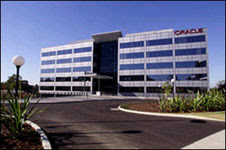It has come full circle for me. Ten years ago I joined a little start-up called BEA that had visions of being the transaction backbone for internal corporate IT systems and the internet. Four years ago I joined Oracle as I could see the power of the convergence of middleware and applications and how this would disrupt the traditional integration focused middleware approaches. Now Oracle has formally closed the acquisition of BEA and formed what is the now number one middleware vendor.
Being reunited with many of my old BEA colleagues is a great experience. For them moving to Oracle with its huge depth and breadth is a little overwhelming but all of us can sense the fact that we are strapped into a vehicle with some serious horsepower. The combined Oracle/BEA middleware organisation is now, globally, number one ahead of IBM.
Adding these two entities together and looking to the future really makes the Oracle/BEA middleware team one of the most exciting places to be in software today.
So how is Oracle going to merge the two product stacks together. Recently Charles Phillips (President Oracle) and Thomas Kurian (SVP Product Development) recently held a press conference detailing this. To see this and more detailed information go to middleware strategy homepage at http://www.oracle.com/products/middleware/bea.html. There is a link to the Webcast and PDF of the strategy document. There are also many more detailed drill-downs into each of the product areas. So finally the news is out and we can talk about the BEA /Oracle Roadmap. The two key points are:
- No forced migrations Oracle has bought 40 odd companies in the last few years and has taken the approach that we never force customers to migrate. This was done in the Apps space and is now also being practiced in middleware. Existing BEA and Oracle middleware customers can continue to use the products they have into the future and buy more of them when they need to. This respects customers’ choices in the technology and skills they have invested in and allows them time to move onto the strategic product platforms that Oracle will build out of the BEA/Oracle stack.
- Strategic Platform Although customers can continue along the existing pathway they had chosen Oracle of course will choose products from the combined portfolio that will be strategic. These will be the products that we recommend to new customers as well as recommend existing customers to move towards. This means of course that some products are not strategic and so will be de-emphasised while others will be merged together into a new product.
In a few days I will write another blog going through the SOA/BPM stack in detail talking about what is strategic and what is going to be de-emphasised going forward. So check back soon!


No comments:
Post a Comment